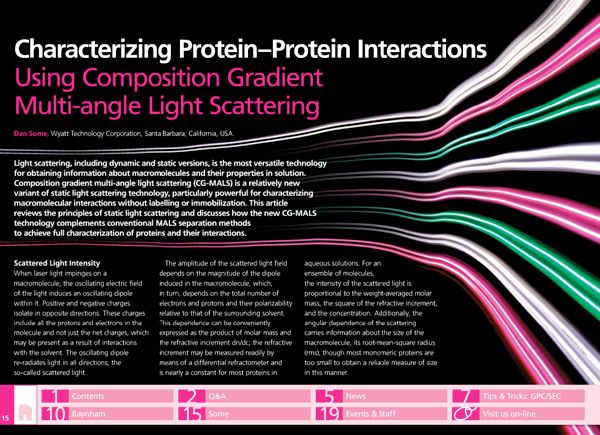Characterizing Protein-Protein Interactions Using Composition Gradient Multi-angle Light Scattering
This article reviews the principles of static light scattering and discusses how new technology complements conventional separation methods to achieve full characterization of proteins and their interactions.
Light scattering, including dynamic and static versions, is the most versatile technology for obtaining information about macromolecules and their properties in solution. Composition gradient multi-angle light scattering (CG-MALS) is a relatively new variant of static light scattering technology, particularly powerful for characterizing macromolecular interactions without labelling or immobilization. This article reviews the principles of static light scattering and discusses how the new CG-MALS technology complements conventional MALS separation methods to achieve full characterization of proteins and their interactions.
Targeted Blood Lipidomics of Colorectal Cancer: An HTC-18 Interview with Jef Focant
July 26th 2024At HTC-18 in Leuven, Executive Editor of LCGC International, Alasdair Matheson, spoke to Jef Focant from the University of Liege about his talk entitled, “Targeted Blood Lipidomics of Colorectal Cancer."
Carol Robinson Awarded 2024 Lifetime Achievement European Inventor Award
July 24th 2024Carol Robinson of the University of Oxford has received the European Inventor Award 2024 for Lifetime Achievement from the European Patent Office for her work bringing mass spectrometry to structural biology.
